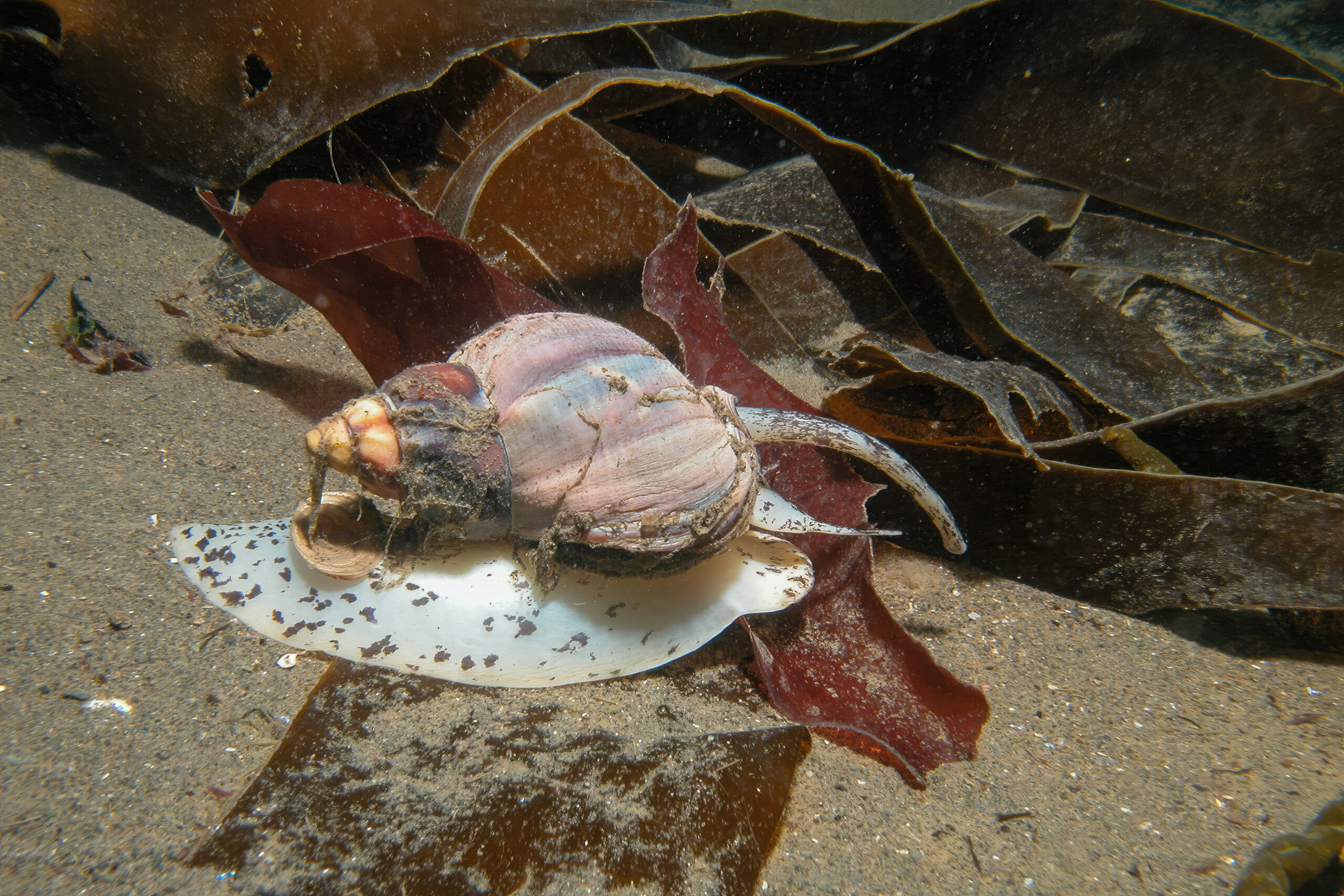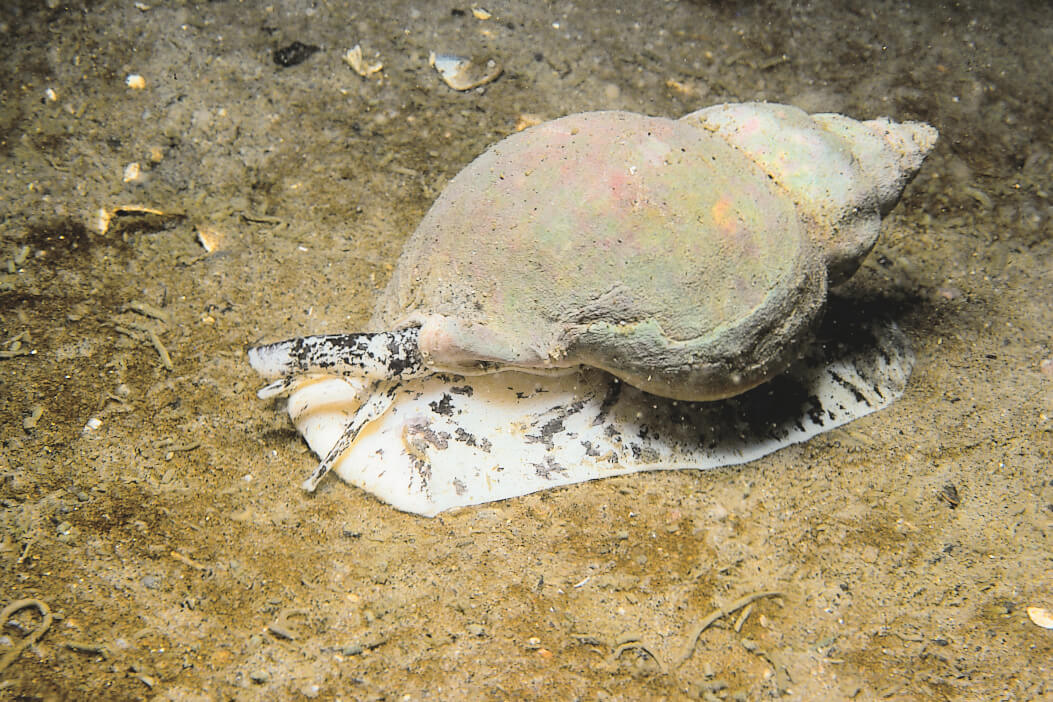
SIZE:
Shell can grow to 15 cm.
LIFE EXPECTANCY:
10 to 15 years.
LIFE CYCLE:
Mating takes place between May and June. Two or three weeks later, the females come together to lay their eggs in the same place. The eggs form a spongy, yellowish, sticky mass casing, sometimes called sea wash balls. Five to eight months later, juvenile whelks are born, 2 to 3 mm in size.
Bed and breakfast
Empty whelk shells can become a favourite home for hermit crabs.
The waved whelk’s body is white with black spots. Its shell is light-coloured with a thin yellow coating. Its shape and colour can vary. It has five to eight spirals ending in a point. The opening of its shell is closed by a hard operculum found at the end of the whelk’s foot.
Coastal zone, up to 30 m depth.
The waved whelk favours cold waters and sandy or rocky bottoms.

Waved whelk likes sandy bottoms.
Credit: Richard Larocque, photo taken at Pointe-au-Père.
PREYS:
Softshell clams
Bivalve shellfish
Organic matter
PREDATORS:
Sea stars
Crabs
Lobsters
Fish
MACHINES:
Traps.
REGULATIONS:
- Fishing effort management (number of traps, minimum whelk shell size of 63 mm)
- Total allowable catch in certain fishing zones
- Fishing seasons
As the waved whelk is not a fast-moving animal, it is more vulnerable to local overfishing. It has been fished in the St. Lawrence River since 1940.
BENEFITS:
Rich in magnesium, iron, calcium and in B and C proteins.
LET’S COOK:
Sold cooked, frozen or preserved in brine or vinegar. Texture and flavour depend on how it has been prepared. In brine, it will have a finer, iodized flavour. In vinegar, whelk will have a slightly tougher texture. Freezing tenderizes the product, giving it a softer texture.
OUR CULINARY ADVICE:
- The waved whelk is like a giant snail. Instead of eating garlic escargots, why not try the local version with whelk?
- Great as an appetizer, snack or in a chowder.





